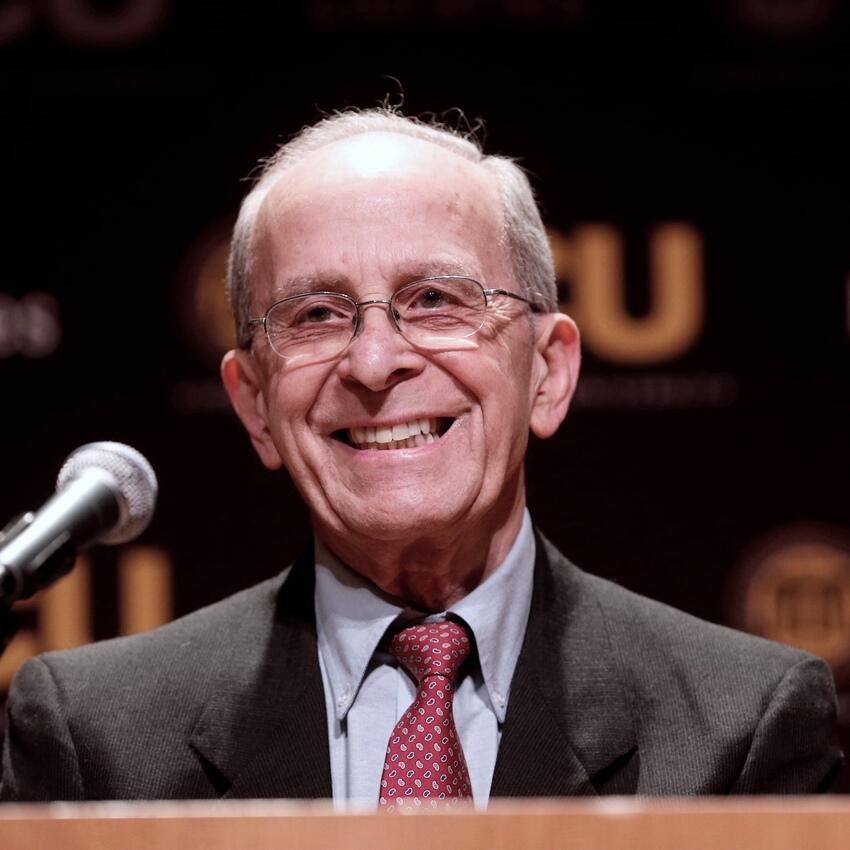
May 8, 2014
Alumni couple donate Torah that survived the Holocaust
Share this story
Virginia Commonwealth University announced today the acquisition of a Sefer Torah, a powerful symbol and moving presence in Jewish worship and community life. Presented by an alumni couple with deep connections to the university, it will be held and safeguarded by the VCU Libraries’ Special Collections and Archives.
Donors Martin L. Johnson, M.D., and Olinda Young have ties to both MCV and Monroe Park campuses. Johnson completed his medical residency (house staff, plastic surgery, 1980) at the VCU School of Medicine, and Young holds two VCU degrees, a bachelor’s degree in education (1975) and a master’s degree in public administration (1981).
Johnson and Young are avid and eclectic collectors of global art, antiques and artifacts.
“We’ve spent 30 years collecting beautiful things,” Johnson said. “Now, at this stage in our lives, we want to share these beautiful things.” An interest in collecting old Bibles led to an interest in Torahs. He describes this Torah as “a monument to the survivors.”
The Torah scroll, on parchment scribed in the customary Hebrew, was composed in Romania around 1750. During World War II, it was confiscated by the Nazis. It is believed to be from an area of Transnistria, known as the Romanian Auschwitz. Registration numbers and stamps confirm its provenance and also that the scroll was held by communists. It was repatriated to Israel in 2003. Israeli authorities released the scroll for private ownership. It is considered to be in excellent condition, according to the rare books and manuscripts appraiser who authenticated the artifact.
VCU Libraries will unveil the Torah, which is undergoing preservation, at a future event. It will be on display in the new library building, scheduled to open in 2015.
“We look forward to making this symbol of survival and hope available to our entire community for teaching, learning and remembrance, always with appropriate reverence and respect,” said University Librarian John E. Ulmschneider.
For more photos of the Torah, visit an online album created by VCU Libraries.
VCU expert on Judaica explains the significance and meaning of the Holocaust Torah

Religious studies professor Jack D. Spiro, Ed.D., D.H.L., the Harry Lyons Distinguished Chair in Judaic Culture at VCU and editor of VCU Menorah Review, answers a few questions about the Holocaust Torah.
How would you imagine or anticipate this artifact might be received by the VCU and metro Richmond community?
It will be received with profound gratitude and respect. It is the supreme symbol of Judaism and one of the Torahs that "survived" the burning of thousands.
Does a Holocaust Torah carry with it special meaning and symbolism? How so?
So much meaning it's difficult to summarize. Had there been no Holocaust, the Torah would have continued to be the supreme symbol of Judaism. It is read systematically every Sabbath and different portions in keeping with the themes of every Jewish holiday. It always occupies a central place in the synagogue with what is known as "Aron Kodesh"— a Holy Ark. There is simply no such thing as a synagogue without a Torah.
But how much the more so is a Holocaust Torah important because of the powerful metaphors associated with it. Six million Jews were killed by the Nazis. The Nazis and their perversely inhumane ideology are no more. But the Torah [is the] symbol of the sanctity of learning, and the basic values of the Judeo-Christian tradition live on through [it]. The Hebrew word itself means "teaching." Since there is no teaching without learning, it represents the central importance of education among all the values of Judaism. What could be more relevant, therefore, than to place such a symbolic object in the library of an institution of higher learning?
But another word of supreme importance in Judaism is "Zachor" -- "remember,” grammatically an imperative word. The Torah rescued from the total darkness of the Holocaust also represents this imperative.
What is the significance of this artifact to students and teaching?
It's quite possible that most students who take courses in religious studies at VCU, and even those who major or minor in religious studies, have never seen a Torah. Having a Torah on display with the ability of opening it and reading passages from it, will be a unique opportunity for students to understand it from a visual and tangible perspective. In addition, it becomes an opening through which they can be motivated to study the Holocaust and all expressions of dehumanization in the world.
Subscribe to VCU News
Subscribe to VCU News at newsletter.vcu.edu and receive a selection of stories, videos, photos, news clips and event listings in your inbox.









